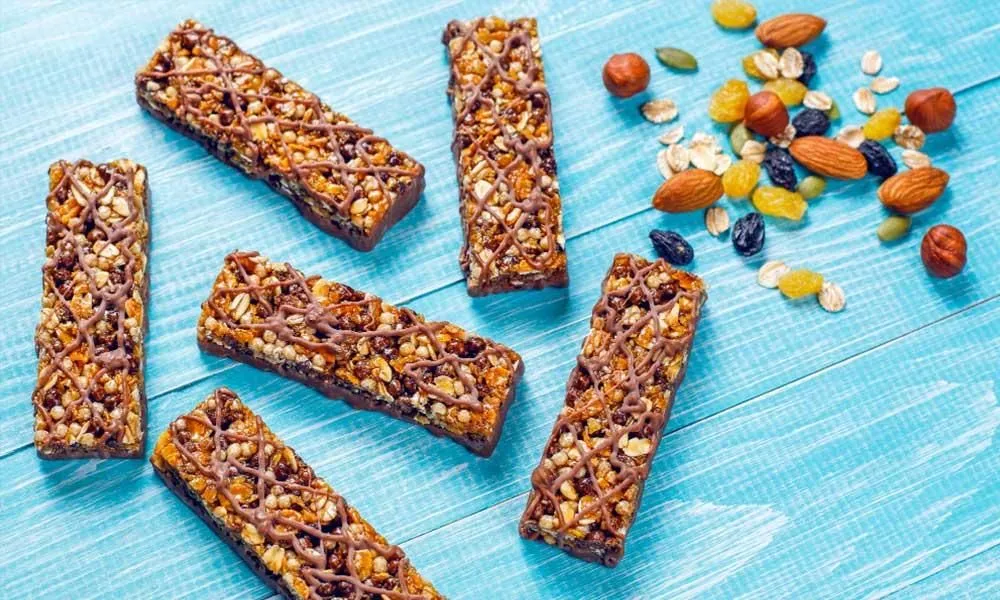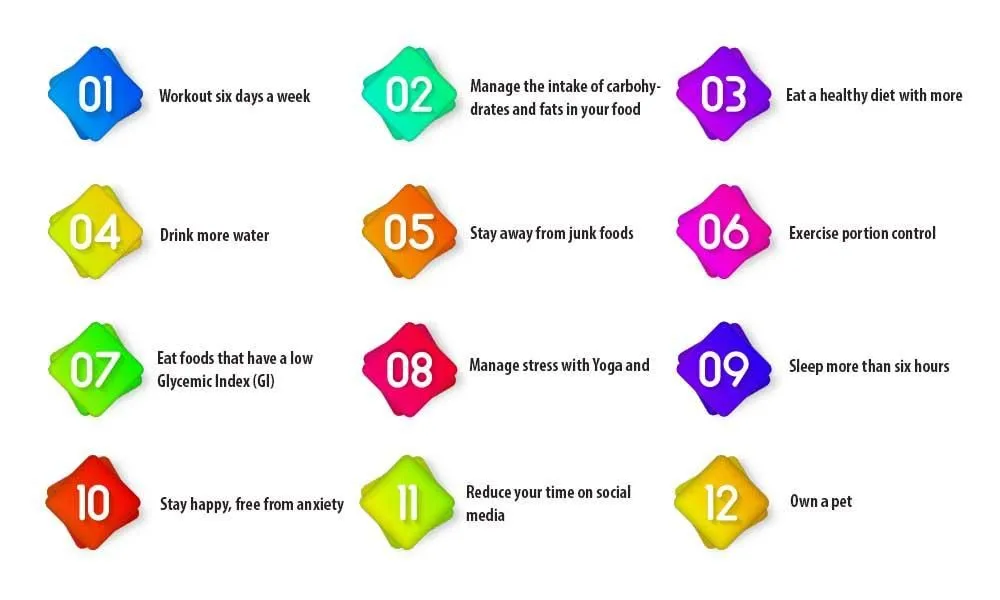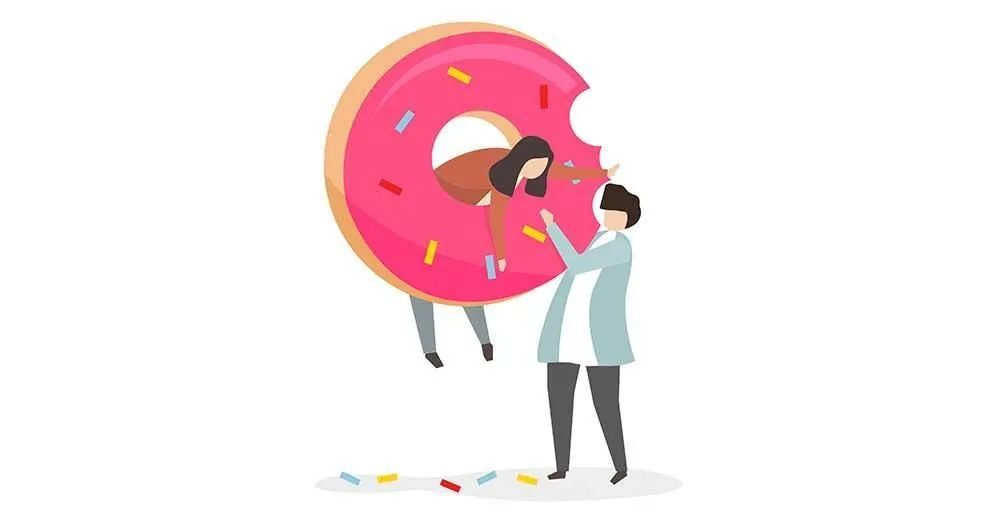If there is one word that is always associated with unwanted weight gain and diabetes, it is sugar. A regular constituent of our foods, this sweet-tasting compound is made of soluble carbohydrates and hydrocarbons. It is available in the form of sucrose, a disaccharide made of glucose and fructose. The bad thing about it is that it is not easily soluble in our bloodstream and can cause fat accumulation or heart ailments in most people.
Everybody knows that sugar is the biggest culprit when it comes to weight gain. It is extremely high in calories and also harms insulin (the fat-storing hormone) and blood sugar levels in our bodies. However, it is not always bad because not eating any of it would disrupt our biological functions and reduce our blood sugar levels, thus leaving us unable to even stand up properly.
Known as Hypoglycemia, it is a serious health issue in today’s fast-paced world and it is only made worse by eating foods that aggravate it. We are offering this blog as a handy reference for all those people who are suffering from it, and we shall conclude it by offering one-point access to some of the best healthcare experts worldwide that can be consulted right now!
Sugar does contain too many healthy nutrients, as you can see for yourself:
Sugar (sucrose), granulated
Nutritional value per 100 g (3.5 oz.)
Energy |
1,619 kJ (387 kcal) |
|
Carbohydrates |
99.98g |
|
Sugars |
99.91g |
|
Dietary fiber |
0g |
|
Fat |
0g |
|
Protein |
0g |
|
Vitamins |
Quantity |
%DV |
Riboflavin (B2) |
0.019mg |
0.02 |
Minerals |
1mg |
0 |
Calcium |
1mg |
0 |
Iron |
0.01mg |
0 |
Potassium |
2mg |
0 |
Water |
0.03g |
The above values are taken from Wikipedia and are verified by USDA.
The American Heart Association (AHA) recommends not taking more than 6 teaspoons or 24 grams of sugar for most women and not taking more than 9 teaspoons or 36 grams for most men. The results may vary for people with blood sugar or blood pressure issues.
Persisting with a high blood sugar diet for a longer length of time can wreak havoc on your health and fitness. The worse may happen with the inclusion of the so-called “healthy foods” because while it may appear harmless to have them (or even nutritious at first), but that does not make them less dangerous.
Tip: We recommend checking with a virtual wellness expert if you have are a compulsive eater or if you have been experiencing higher levels of anxiety for quite some time now.
One cup of fat-free milk has 12g of sugar. Rather than going for cow’s milk, you should opt for soy or almond milk, since both alternatives have nearly half the sugar content in comparison to cow’s milk.
Breakfast is the most important meal of the day. You should not spoil it by opting for commercial breakfast options (cold cereal, instant oatmeal, healthy cereals, toaster pastries, etc.), which usually have high sugar in disguised form. We recommend going in for options like whole eggs with veggies, protein shakes, etc.
Fast food is a big no-no for people who want to lose weight. The bread that is used to make the sandwiches and the sauces all have sugar and the same is true for the fillings. It would be better to go for a sandwich or salad with olive oil and vinegar as a dressing.
Everybody loves ketchup because it tastes good with every food. While enjoying the taste we tend to forget that most of the tomato-based foods are filled with sugar. Can you believe that 1 tbsp. of ketchup has 1 tsp sugar, using this you can calculate for yourself how much hidden sugar you are consuming?
Considering health and weight loss as a priority, you can opt for mustard sauce rather than going for tomato sauce or ketchup.
One cup of your favorite marinara sauce usually contains 14.5g of artificially added sugar. Instead of buying packed spaghetti sauces, you can opt for homemade pesto sauce or Bolognese sauce. They are high in nutritional value but have lower sugar content.
You might be thinking that yogurt is healthy food but it is important to know that some types of flavored yogurts have more sugar in a single serving than the amount of sugar that is there in a serving of ice cream. For a healthier choice, you should go for yogurts that are free of hormones or antibiotics and are plain in flavor. You can top it with your favorite fruits or nuts.
Also read: 2 Healthy and Organic Breakfast Recipes
It is obvious that fruit juices are laden with sugar, but what is worth noticing is that vegetable juices are no exception. A glass of packed vegetable juice has about 8g of sugar per serving, this is especially true for apple juice because it is high in artificial sugar. It is much better to go with a leafy smoothie instead.
Easy-to-go protein granola bars may come with a ton of unprocessed sugar. The latter is made of evaporated cane juice, brown sugar, agave, and bad honey. So to avoid the intake of added sugar skip the granola bars and go for fresh fruit with peanut butter dipping, when looking for a quick snack!
Stopping at a drive-through for a quick coffee drink is a pleasing idea, isn’t it? But what is not that pleasing about the idea is that your favorite latte has more sugar as compared to a doughnut. It’s time that you start enjoying your daily cup of joy without any sugar, i.e. black since it is the best way to enjoy and appreciate the taste and aroma of a coffee bean.
Suggested read: Myth or Fact: Coffee Boosts Workout Performance
Even the bare minimum necessity of everyday routine is not free of sugar. Two slices of whole wheat bread have around 8g of sugar. Rather than filling your sandwich stuffing into bread, you may opt for a whole-wheat pita that has only 0.5g of sugar.
Salad is a great way to improve health since it has a lot of veggies and is extremely rich in nutrition. They are counted as diet food but the dressings used to enhance its taste have high sugar content. You should thus read the labels before buying the store dressings and avoid dressings containing high fructose corn syrup or some other type of added sweetener.
Tip: Even better if you could make your dressings using olive/avocado oil, vinegar, and fresh herbs!
The whole process of making a dry fruit aims at zapping out the vital nutrients of the fruits like fiber and minerals. With these nutrients, the taste also goes down. This is why artificial juice manufacturers usually compensate for it by adding artificial sugars, sulfites, glucose syrup, fruit juices, and sorbic acid. These flavors may make the juice palatable but are not friendly to your liver and kidneys.
Your favorite sports drinks may also not be as “healthy” either. According to a study done at Harvard, most sports drinks fall under the “drink sparingly and infrequently” category and they can add up to 50g of sugar in a mere 12oz. of serving.
The energy boost you get after consuming these drinks is often a misplaced surge of sugar in your bloodstream. It is much better to stay away from all these drinks and rather go for organic options like lemonades and leafy smoothies.
The convenient options to have healthy food like oatmeal are generally laden with sugar, maple syrups, and many other added sugar substitutes. So if you go for any option other than the old-fashioned way you are harming your body rather than doing any good!
A low-fat diet may be insipid and boring. To make it palatable, some manufacturers add artificial sugar to it. This does not offer good results for someone on a fitness diet. One should rather opt for natural products with full fat to avoid the intake of added sugar.
Normal blood sugar levels lie between 160 milligrams per deciliter (mg/dL) and 240 milligrams per deciliter (mg/dL).
A highly dangerous level of blood sugar sits above 600 milligrams per deciliter (mg/dL) or 33.3 millimoles per liter (mmol/L), you could be suffering from Diabetic Hyperosmolar Syndrome. It can cause your blood sugar to spike unnaturally and left untreated, it could turn fatal.
Our virtual healthcare experts advise you on the following ways to reduce your blood sugar levels:
1. Workout six days a week
2. Manage the intake of carbohydrates and fats in your food
3. Eat a healthy diet with more fiber
4. Drink more water
5. Stay away from junk foods and drinks
6. Exercise portion control
7. Eat foods that have a low Glycemic Index (GI)
8. Manage stress with Yoga and Zen
9. Sleep more than six hours every day
10. Stay happy, free from anxiety
11. Reduce your time on social media
12. Own a pet
Hypoglycemia is a certain condition in which the blood sugar (or glucose) levels in our body are too low. A life-threatening condition, it is not exactly a “disease” but it affects several thousand people in the US alone. It affects people suffering from diabetes or fluctuations in their blood pressure and may be caused due to medications, eating an improper diet, taking too much stress, or a lack of fitness.
Our healthcare experts advise you to check out for the following symptoms:
Nervousness
Palpitation of heart
Shakiness.
Excessive sleepiness
Vertigo
Sweating in palms or on the forehead.
Thirst
Too high pulse rate or heart rate
Desire to eat something salty
Lack of focus
Confusion
Lack of motor control
Loss of vision (in some cases)
Anxiety
Fear of death
Hypoglycemia can only be treated by a healthcare expert. He will ask for your medical history, recent health or fitness issues, medications taken, dietary habits and preferences, fitness habits, and stress levels. Post that, he will create a treatment plan for you. It would take you some time to get rid of this life-threatening health issue.
If you are all alone and feel that you are at risk with this malady, we recommend eating some carbohydrates like sweet potato or fruit juice, sweet candies, or even glucose and then call up an emergency service promptly.
Tip: Be sure to calculate your sugar levels regularly, preferably every 15 minutes after eating something.
Hypoglycemia doesn’t only happen to diabetics or sugar patients. It may also hurt infants (or newborn babies) just as easily too. Your baby could be at risk if he or she is exhibiting the following symptoms:
1. Irritability
2. Crying
3. Sleeping too much
4. Difficulty in breathing
5. Nausea
6. Pale yellow or even blue color on skin
Left untreated, the results of hypoglycemia in infants could be fatal. It may also lead to long-term brain damage or learning disabilities. We recommend consulting a child health specialist promptly
The consumption disease, or Tuberculosis (TB), is a disease caused by Mycobacterium tuberculosis bacteria. It attacks the respiratory system (or the lungs). This disease was first detected at the turn of the 20th century and caused thousands of calamities in the United States then.
Its cure was found by Selman Waksman in 1943. He discovered a medically active compound called streptomycin that neutralized the bacteria and corrected the strains caused by them. Ever since then, the disease has been on a constant decline in most parts of the world.
This disease may also be linked to the fluctuations in blood sugar levels in some people, especially those of American or European descent. Its medication may also cause the blood sugar to spike off at rather unusual times. We recommend getting it checked as per the symptoms evident and also if you have had a family history of the same.
Sweets are delicious and irresistible but such foods may be bad for our health. A compulsive or obsessive behavior of consuming artificial sugar or sweet foods could put your digestive and metabolic system at risk.
Worse may follow for people who have inherited diabetes from their parents or grandparents. They may not be sugar patients yet, but they are prone to health risks. We are listing some common symptoms or results that will help you to know if you are eating too much sugar.
Here they are:
The more you eat it, the more you will crave it. The vicious cycle of eating more and more sugar may offer you an instant spike in your mood but may just as easily also lead you to a body crash after some time.
The reason why we ask all blood sugar patients, or compulsive or binge eaters to stay away from consuming too sweet foods is that they may only end up inviting obesity and a weakened immune system. This also lowers their threshold for resisting several other diseases
Excess sugar means extra empty calories since there is no filling nutrient in sugary items. Every sweet food item also triggers the release of insulin, a hormone that plays a big role in weight gain. When you increase the intake of sugar, it leads to insulin resistance in your body. This means that your body can’t respond to normal amounts of insulin properly and therefore can’t use sugar the right way.
As the pancreas overwork to maintain the levels of insulin, they may even fail altogether. This is often a common case with diabetic or heart patients. Eating too many sweets and sucrose for longer lengths of time can also cause your kidneys and liver to malfunction- and the damage is often irreplaceable.
Tip: You should consult a virtual healthcare expert promptly if your medical tests indicate less than proper functioning of your kidneys and liver.
There are high chances that an abnormal spike in the insulin levels can set off a hormonal cascade that can lead to a breakout like acne or rosacea. By not adopting a more careful and restricted diet, you are putting yourself at an absolute risk. You may also develop skin disorders too.
Your body is the reflection of what you eat. After the initial spike in insulin that causes a high, there is an inevitable crash. The stability of energy depends on how stable is the blood sugar level – when you consume too much sugar, the highs and lows of your blood sugar lead to highs and lows of energy.
When you intake too many sugary items your body is not getting enough protein and fiber both the nutrients that are important for sustained energy.
This is a common symptom of low blood sugar levels. When you intake a lot of sugar, there is a rapid rise and fall in blood sugar rather than gradual. Poor blood sugar control is a major reason for cognitive issues and impairment. As it continues, the person also gets in the risky zone of making improper decisions or even collapsing midway!
The main reason for tooth decay is the acid that is produced when the bacteria chow down on food particles in between the teeth. Eating too many sweets can impact the pH levels and may cause food to get stuck in the teeth, thus causing cavities and a lot of pain. With consistent negligence, the jawbones may also weaken permanently.
Eating too much sugar makes a major impact on your taste buds making them weak. The sugar tolerance goes up and you need more and more of it to satisfy that sweet craving. It becomes difficult to get back to the normal base level once your taste buds need lots of sugar to feel like something is sweet.
If you cut back sugar abruptly, you may suffer from symptoms like crashes, lower energy levels, mood swings, etc. But if you do not give in to your untimely cravings, you can wade through the impossible and live more healthily.
Your blood sugar is directly related to the glucose in your bloodstream. We thus recommend that you should eat foods that help you maintain healthy levels of this sugar component. You should go with the following high-blood sugar diet options for hypoglycemia:
1. Whole grains
2. Lean protein and meat
3. Vegetables and seasonal fruits
4. Nuts and dry fruits
5. Legumes
6. Garlic
You should also drink plenty of water every day to maintain enough blood pressure in your body. It would also keep your metabolism and brain activity in top shape, leading to sharper reflexes. In any case, it would be best to consult a professional nutritionist for a personalized diet plan.
The key is to be responsible and to cut down on foods that can spike your blood sugar levels. Hypoglycemia is a scary health risk and can cause brain damage or may even prove fatal in some cases. We would also recommend you to cut down on some healthy foods too if they are interfering with your well-being, as mentioned above. Consulting a fitness and healthcare expert too could come in handy!






